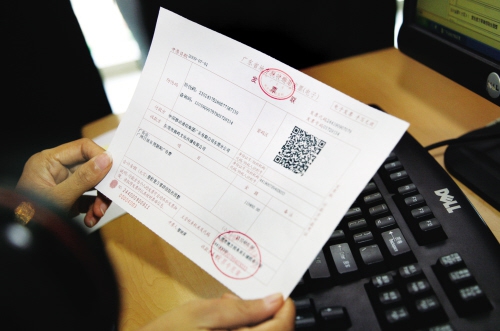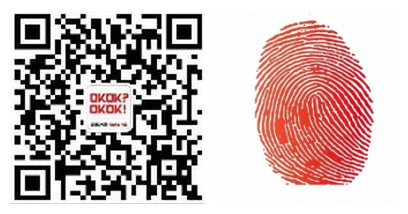
If you’re only traveling in China, this article will go completely over your head, but if you’re here to work (and certainly if you’re doing business in the country) you’ll soon become aware of the fapiao (发票, fāpiào). You’ll also wonder why everyone is obsessed with them and what on earth they are for. Let’s try to explain that.
The fapiao
A fapiao is basically a kind of invoice given when a payment is made, serving as a legal receipt. However, these invoices are also used by the Chinese government to monitor tax paid on any transaction. It’s this latter function that makes them so important.
In business, when payment happens, the consumer should ask for a fapiao from the seller, and keep that fapiao as proof of expenditure.Fapiao are printed, distributed, and administrated by tax authorities. Different fapiao are issued for businesses in different industries. Taxpayers purchase invoices directly from the tax authority.
One interesting point to note is that businesses are required to purchase the relevant fapiao for their industry in the amount they predict they will need over the year ahead. The cost of the fapiao is equivalent to the tax that would be paid on sales amounting to the value of thefapiao purchased. Therefore, you’re effectively paying tax in advance on your future sales.
Authentic fapiao will feature the tax authority’s seal, as well as an invoice number. A receipt without these two features cannot be considered a fapiao.
As a consumer, it’s your obligation to request a fapiao after a purchase. Therefore, if you need to get one, ask when you pay. Be clear and specify whether you want a personal or company fapiao, and what title you wish to have printed on the fapiao.
Fapiao and expenses
For the common consumer, a fapiao can be used as valid proof of expenditure where one needs to reclaim any expenses made (e.g. on a business trip); mere receipts (those without stamps, handwritten or spat out by tills) will not be suitable for this use.
Most businesses that require their employees to get fapaio for expenses will also need the name of their company printed onto the fapiaoin Chinese characters when it is first acquired. For more information, see ‘General invoices’, below.
Note that some businesses, particularly big chains such as Starbucks and KFC, will give tear-off fapiao worth between five and 100 yuan. These will feature the company’s stamp, but won’t require you to have your business’s name printed on them. Likewise, taxi fapiao can be taken and expensed without having to give your company’s name.
Sometimes foreigners are also required to provide a fapiao from rented or purchased accommodation as proof of residency for visa purposes. Your employer’s finance or HR department may come looking for you to provide rent fapiao. On the flipside, your landlord may be very reluctant to provide such a fapiao. Welcome to China.
Businesses that refuse to give out fapiao
By law, all businesses are required to produce a fapiao at the customer’s request at the time of purchase. Some business owners will claim they are “unable” to produce a valid invoice. You should know that this is essentially tax evasion (either that or an indication that the business is not actually a registered operation).
Many businesses will give this explanation when they first open (you’ll find this is common in new restaurants and bars, for example). In these cases, you may give them the benefit of the doubt, as this may be related to the bureaucratic procedures involved with opening a business and registering with the tax authority. However, if they’re genuine, they should offer to take your details down and mail you yourfapiao as soon as they are able to.
Other businesses, however, use this trick on an ongoing basis. This is thoroughly illegal, and the customer has the right to report the business to the authorities by dialing 12366 – the national tax authority’s helpline.
Types of fapiao
Fapiao can mainly be sorted into two categories – general invoices and special value-added tax (VAT) invoices. Although these terms are often used interchangeably, there are notable differences between the two.
VAT invoices
First, VAT invoices can be used for tax deduction purposes, while general invoices cannot. Second, as the VAT invoice is used for tax deduction purposes, it will contain a lot more details with respect to the trader’s information, including tax number, address, telephone number and bank account information. Finally, the purchase amount on a VAT invoice is usually explicitly broken down to its non-tax and tax components, while the amount shown on the general invoice is usually a tax-inclusive figure.
General invoices
There are several kinds of general invoice that you’ll encounter in daily life. Firstly, taxi receipts, which show the taxi’s number plate, the journey time, unit price, mileage, time spent waiting in traffic, and total cost. Next, general invoices issued after a purchase. If you make a purchase, the seller has to provide a fapiao. These can be handwritten or printed, but you need a printed fapiao if you are using it for official purposes.
Finally, if you take a train or bus, or go to a museum, your ticket can be used as a form of fapiao proving your purchase - though again, these will not do if you are using them for official reimbursement or tax purposes.
Another important practical distinction is between a “personal” (gè rén 个人) and “company” (gōngsī 公司) fapiao. These indicate who is entitled to reclaim the money. If your company is covering the expenditure, for example on a business trip or for a purchase made on behalf of the company, you should ask for a gongsi fapiao, with your company’s full name (as listed on the company’s business license) printed on it.
Check with your boss or a colleague what name should be printed on the fapiao. It may be as simple as the company’s name as printed on your business card – but if not, get somebody to write it down for you, or have it saved as a note on your phone. If there’s a single mistake in the company’s name, the fapiao will be worthless to your company, so make sure this gets done properly.
Examples of fapiao
Below are a few examples of fapiao. These may vary from province to province, but this is a guide.
A VAT fapiao looks like this:

A Beijing-issued special invoice for the “service industry, entertainment industry and physical culture industry”:

A Beijing-issued general invoice (note that it is printed - it would not be useable for reimbursement if handwritten):

A Beijing-issued general handwritten invoice:

A Beijing taxi receipt:

Source: One-Stop
Using WeChat? Scan QR Code or Press the Fingerprint Below ↓
--- (Or ADD WeChat ID: OKOKOKOKnet)
